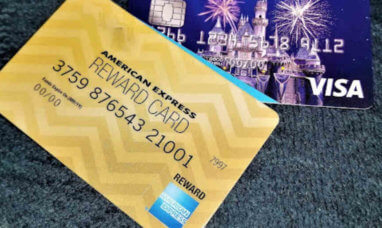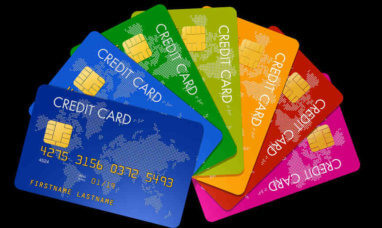If you are having trouble paying your credit card bills, or you have been denied a mortgage due to a high debt-to-income ratio, then it might be time for some action. A balance transfer is a great way to start lowering your credit card bill and get back on track with meeting monthly obligations.
In this post, we will outline the process of doing a balance transfer from one credit card company to another. Each of these steps is important to acknowledge as you begin the application process.
1. Understand Balance Transfer, And Make Sure It’s Right For You
Let’s start by defining what a balance transfer is. A balance transfer is the shift of your debt from one credit card to another that offers you a lower interest rate on your outstanding balance. With this, you can save thousands of dollars by doing a simple shift of debt.
Now, let’s define what an interest rate is and why it matters so much: the annual percentage rate on a credit card determines the interest rate you will pay to borrow money. Credit cards typically offer a higher APR than other forms of debt, such as mortgages. Some credit card companies do not even disclose this number and instead lump different interest rates into one category called “interest charges.”
How Much Debt Do You Have?
Balance transfers work best if you are under $10,000 in debt. If you have a balance over $10,000, then a balance transfer may not benefit you as much. Note that balance transfers can still help you if your debt is higher than $ 10,000$, but you’ll most likely have to choose one of your debts to transfer and pay off the others after.
What is Your Credit Score?
If your score is below 680, you will have a hard time finding credit card companies that will approve your request for a balance transfer. To work around this issue, negotiate an extension of existing payment deadlines with your current credit company to allow more time to pay off your debt and improve your score.
Does Balance Transfer Count Towards Minimum Spend?
Yes. Balance transfers count towards the minimum spend required to earn the credit card’s bonus features, such as cashback, miles, or points.
What About Internal Balance?
An internal balance transfer is to shift the balance from one loan to another. This process can save you a lot of money as it might decrease the interest you pay on your loans and mortgages, saving you hundreds or even thousands of dollars over time. The Internal Balance Transfer also has the same requirements that are needed for an external Balance Transfer.
Does Balance Transfer To An Existing Credit Card Affect Credit Score?
Yes. The credit card balance transfer will affect your credit score, but it might be a good thing if you are trying to raise your score. This is a sign that you are taking the necessary steps to become more financially responsible and improve your credit rating.
2. Compare Different Transfer Credit Cards Available To You
If you have a great credit score, then there are a few things to take into consideration when comparing different balance transfer credit cards:
The first thing you need to take into consideration is how long the introductory APR rate lasts. The number of months you have with the 0% APR on balance transfer offers is essential in reducing your total interest paid.
The second thing to look at is whether any transfer fees are involved when moving debt from one credit card to another. If so, then this will cut into the amount of money that you could save.
The last factor to consider is the balance transfer amount that qualifies for a 0% APR offer. If you have a large outstanding debt, this number will be a bit lower than expected.
3. Get Ready For The Application Process
Before applying for any balance transfer credit cards, there are some things to take into consideration:
Although it is essential to compare different credit cards, you should only apply for one at a time. This will prevent your credit score from dropping if you are denied or need to re-apply for a balance transfer card due to a lower offer.
To apply for a new balance card, you’ll most likely need a computer and a printer to make copies of your documents. The average application process takes 20 minutes from start to finish, but it could take a bit longer if you have many outstanding debts or complicated credit history.
You may need to submit bank statements for two months and sometimes even three months as part of the application process. If you do not have a bank statement that covers at least two months, then you might want to call your bank and schedule a transaction history report.
4. Transfer A Balance To The New Credit Card
Once approved for the balance transfer credit card offer, it’s time to move forward with the process of transferring a balance from your current credit card to your new account.
There are a few things to keep in mind when transferring a balance:
When moving debt from one card to another, there is no need for special forms or paperwork. All you have to do is call the company, and they will be able to transfer your debt with just your account information, though it might take a few weeks to go through.
Remember that balance transfers are for debt, not purchases. If you are planning on making a purchase soon after transferring your balance, you need to make sure that the outstanding balance has been paid off before you can use the card again.
Since most new credit cards give a 0% introductory APR rate for 12 months or more on transfers, it is important to pay off your debt before this time is up. If not, you will be back in the same position you used the balance transfer credit card for.
5. Create A Debt Payoff Plan
Once you have transferred a balance to your new credit card, it’s time to create a plan on how to pay off a credit card before the introductory APR expires.
When you have multiple balances to pay off on different credit cards, start by paying the minimum amount due on all of your cards except for one. Once this card is paid in full, move onto the next card and so on until all of your cards are paid in full.
While it is possible to pay off credit card debt without creating a plan, you could end up spending more than necessary because you forget about interest rates or fees that might be added along the way or not using the money properly.
Bottom Line
One of the most common ways to pay off credit debt is by transferring balances from one credit card to another. If you are looking for a way out of credit card debt, compare balance transfer credit cards and decide which one best fits your needs.
Having a credit score over 670 and being under $10,000 in debt can make you eligible for many different types of balance transfers. This could be the perfect opportunity to save money on interest rates without sacrificing valuable credit history or needed points later on down the line.
Featured Image: Megapixl








